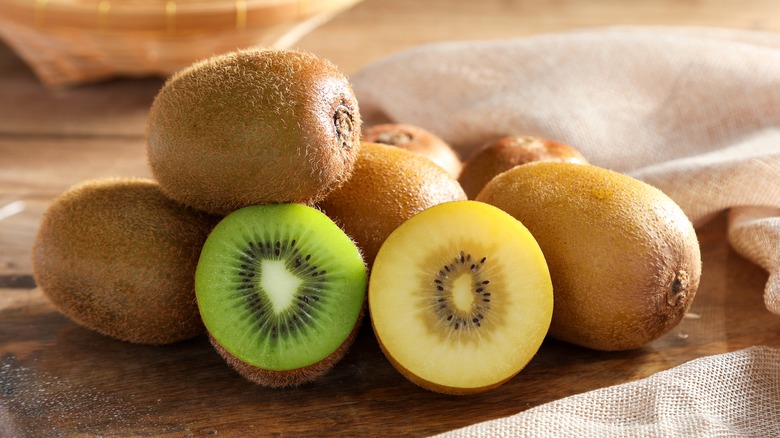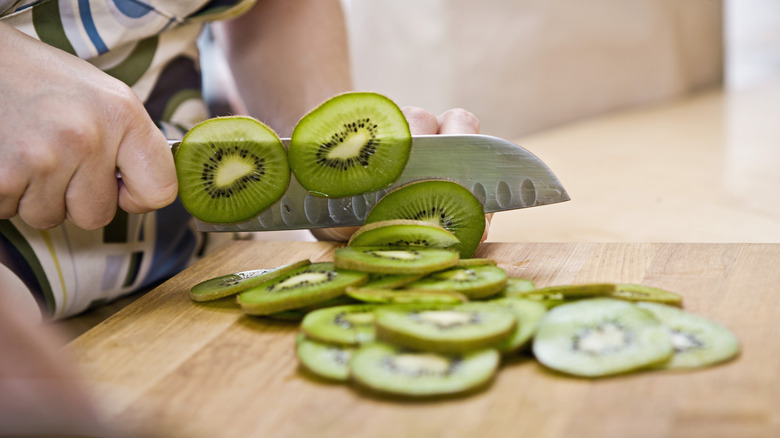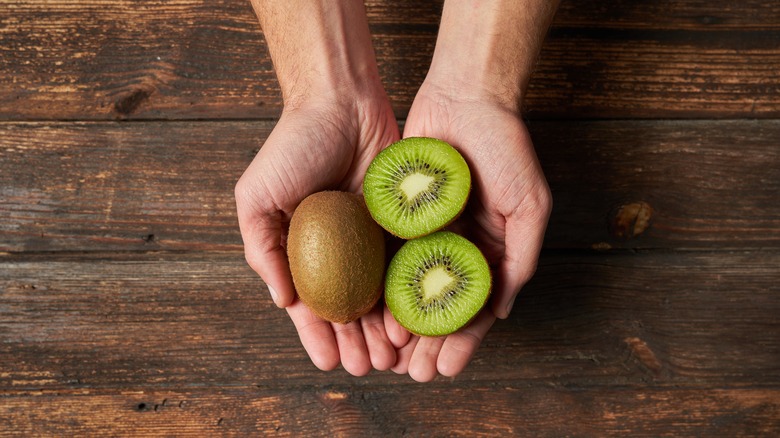Kiwi Skin Is Edible (But Should You Eat It?)
Whether you know the fruit as kiwi, kiwifruit, or Chinese gooseberry (yes, this is also a name for it), the kiwi is not only delicious but is packed with loads of nutrients, as well. While the fruit inside is usually a bright green hue, with a soft white core and tiny black seeds, the skin is often fuzzy and a bit chewy, prompting some to scoop out the fruit inside and toss the exterior. But kiwi skin is not only edible — it's also incredibly nutritionally beneficial.
According to the Farmer's Almanac, kiwi is originally native to China, Japan, and the Korean peninsula. There are two main types of kiwi: the kiwifruit (Actinidia deliciosa), which grows in warmer climates, and hardy kiwi or kiwiberry (Actinidia arguta or kolomikta), which does well in colder regions.
However, there are actually about 60 different species of the fruit, all with varying tastes and textures.
Kiwi skin has even more nutrients than the flesh
You're probably most familiar with the egg-sized A. deliciosa, the fuzzy brown kiwi with tangy, bright green flesh. Hardy kiwi is smaller and sweeter, with a smooth green skin. You might also see gold kiwi in the supermarket, which has a yellow interior and smooth skin, making the skin more palatable for some.
But even though the hairy brown skin doesn't exactly seem like the tastiest treat, you can bite into a kiwi just as you might an apple — and if you're looking for some extra fiber, you probably should. Eating an entire kiwi, skin and all, increases the fiber content by 50%, coming in at about 3.5 grams of fiber. Fiber keeps the digestive system running smoothly and can reduce bloating.
Kiwi skin is loaded with tons of other nutrients, too. There is a high concentration of antioxidants in the skin, such as vitamin C and vitamin E. It also contains a lot of folate, also known as vitamin B9, which helps your body turn carbs into energy.
It might not be the best choice for everyone, though
Despite its benefits, not everyone should start chomping on kiwi skin immediately. If you have a history of kidney stones or a predisposition to them, it might be best to steer clear of it. This is because the skin has a higher concentration of oxalates than the flesh.
Oxalates are natural compounds that bind to calcium within the body. When the two substances join together, they can create painful deposits in the kidneys, called stones. These can cause severe pain in the abdomen, back, and groin area. The American Urological Association recommends reducing your intake of oxalates in food if you're prone to kidney stones.
If you do decide to go for the skin, try scrubbing off some of the fuzz first to make it a little easier to eat. Try cubing it up instead of biting directly into it or mixing it into a smoothie. You could also try starting with a kiwiberry or gold kiwi, which have smoother skin.



